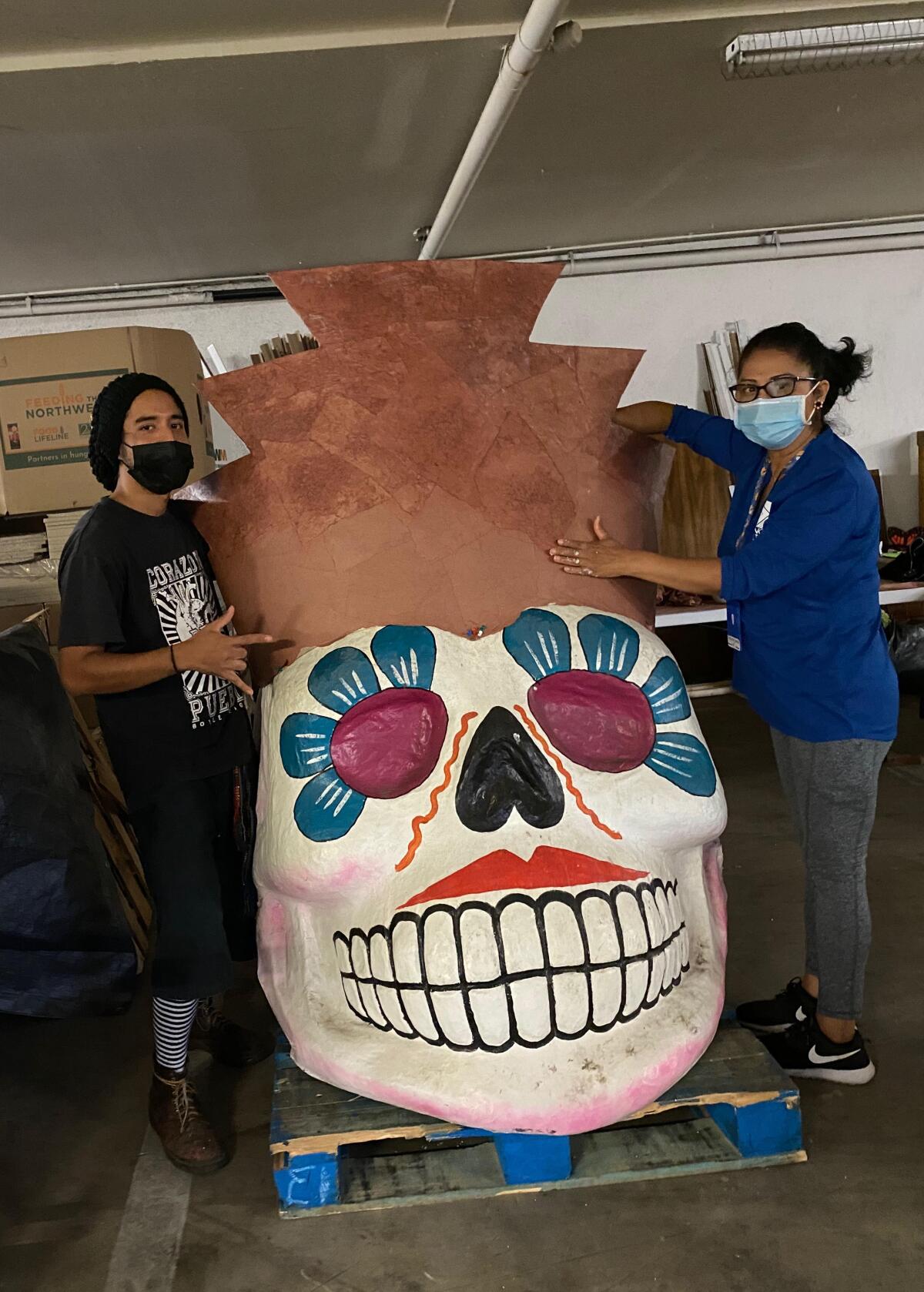Latino nonprofit to bring mobile altar to O.C. neighborhoods most affected by pandemic for Day of the Dead

The Day of the Dead has special significance this year as a deadly pandemic continues to disproportionately affect Latino communities.
Although traditional celebrations and local events have been canceled due to public health risks, a local Latino nonprofit plans to bring the celebration to the homes of those most impacted by the virus in Orange County to honor the deceased.
Latino Health Access, a Santa Ana-based nonprofit that advocates for the health of the local Latino community, will bring a mobile Day of the Dead altar through select areas in Anaheim on Oct. 31 and Santa Ana on Nov. 1.
The cities account for about 36% of the county’s COVID-19 cases.
“Many of the events have been canceled, but we still want to honor those people who have passed away this year because of COVID,” said Karen Sarabia, program associate for the Latino Health Access COVID-19 response team.
The nonprofit is organizing it as part of the Latino Health Equity Initiative. The county launched the program in June in partnership with Latino Health Access after data revealed that the Latino community, particularly in Anaheim and Santa Ana, has taken the brunt of the pandemic in Orange County.
Anaheim is 56% Latino and Santa Ana is 77%.
Through the initiative, Latino Health Access is offering testing, outreach, education and referral services.
The Los Angeles Times reported in late September that while Latinos make up 39% of the state’s population, they account for 61% of the state’s cases and 49% of COVID-19 deaths.
Sarabia said the nonprofit and a few local artists are converting a 28-foot flatbed truck into the altar. She likened it to a float in the Rose Parade.
When Santa Ana’s Daisy Marquina got the virus in May, members of her Shincheonji Church of Jesus prayed over her. So when she learned the church was encouraging recovered members to donate plasma, she signed up.
Residents will be able to take photos with the altar. They can also provide offerings or write down the names of their loved ones and place them on the altar to honor the deceased.
Latino Health Access runs a few COVID-19 testing clinics in the city. Sarabia said they will also bring the altar to those locations.
There will be an opening and closing ceremony, both featuring Aztec dancers. The location of the opening ceremony on Oct. 31 has not been determined. The closing ceremony on Nov. 1 will be held at the Latino Health Access parking lot at 450 West 4th St., Santa Ana.
About five local artists are currently working hard on building the altar. The work has been intensive. The group has been meeting twice a week for a month and planned to ramp up efforts over the final two weeks.
Giovanni Vazquez, a local artist from Anaheim helping to construct the altar, spoke to the significance of the Day of the Dead.
“I think it’s important because … this is how we remember all the dead and how we also celebrate the living,” Vazquez said, “This is how we remember that we’re going to go too. No matter which pandemic, no matter what cause, we are also going to die too.”
He continued: “We would like to share the art and try to make people think that death is also colorful and something we can celebrate … Just being thankful that we met the people in our life, even though they have passed, we remember them.”
Despite a presence of nearly half a century in the U.S., Cambodian and Vietnamese Americans continue to struggle with social inequities, including access to culturally sensitive physical and mental healthcare.
Vazquez said the mobile altar will have the basic components of classical altars in Mexico, where the tradition of Día de Muertos originated. There will be candles, thousands of paper flowers, sugar skulls and many offerings.
There will be a prominent large skull and several smaller skulls with butterfly wings. Vazquez said those represent “the sacred migration of the living.” Monarch butterflies, which migrate to Mexico in November, are important symbols of Day of the Dead.
He said there’s a legend in Mexico that if a butterfly visits a home after the passing of a loved one, it’s as if the dead is visiting the family. People can write the names of their loved ones on the butterfly skulls.
Luis Herrera, a local artist from Santa Ana who is working on the altar, said through Vazquez’s translation that the Day of the Dead is the only way they have to express remembrance for the deceased.
“So the dead know we care for them,” Herrera said.
All the latest on Orange County from Orange County.
Get our free TimesOC newsletter.
You may occasionally receive promotional content from the Daily Pilot.




